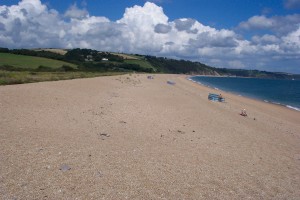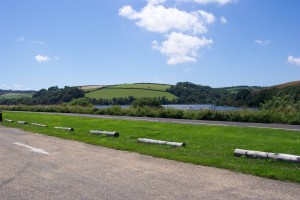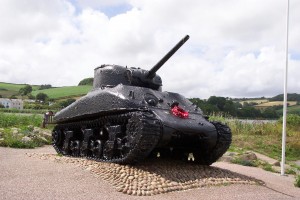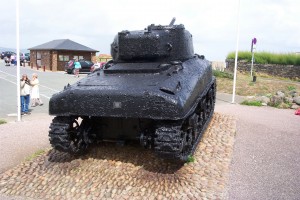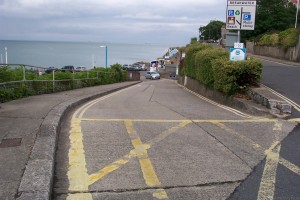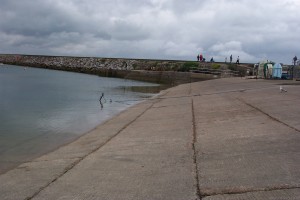Slapton Sands and Sherman Tank, South Devon, England, UK
In the build up to the D-Day Landings, training and more training was needed to ensure the operation was to be a success. What better than to find a beach that was a copy of one of the landing beaches itself. In 1943, Slapton Sands beach in South Devon had been identified by the planners as being a replica of Utah Beach, where the US Army 29th Infantry Division was to land. Only problem was, that there were many villages and farms occupied for generations by many Devonians. However, nothing stood in the planners way and so the villages of Blackawton, Chillington, East Allington, Sherford, Slapton, Stokeham, Strete and Torcross all based in the glorious South Hams district, were cleared of all people and their possessions.
So a battle practice area was created. Many practice landings took place during early 1944, usually with live ammunition being fired across the beach as the landing craft came in. I think I read somewhere that more casualties happened on this practice beach than on the actual Utah Beach landings on D-Day, where luckily casualty figures were very low.
Between April 22 and 30, 1944, Operation Tiger took place. This involved a number of practice landings in both day and night. On the night of April 27/28, 8 LST’s (Landing Ship Tanks) set out from Lyme Bay to turn into Start Bay and onto Slapton Sands. However disaster struck, when a flotilla of German E Boats attacked the convoy and caused havoc. 749 US sailors and soldiers were killed in the attack that night. Many books and articles have been written about the event, so we won’t go into further detail here.
British scientists had remarkedly invented a swimming tank ! Based on a US Sherman Tank, it had two propellers on the back and a thick canvas screen that was raised around it. Launched out at sea, upto 2 miles from the beach, the DD or Duplex Drive Sherman would swim to the beach, drop it’s screen and then continue to shoot up German pillboxes.
During Tiger, one such DD Sherman was launched from a landing craft, but without it’s water proof engine plate in place. It began to sink, so the crewquickly baled out. The tank then sank in 65 feet of water and 3/4 of a mile from the beach. In 1983, Ken Small, a local hotellier from Torcross, discovered it with the help of local fishermen.
In 1984, forty years after it was lost, the tank was towed ashore and winched up the beach, When the tracks hit the slipway, the running gear turned as freely as it had done back in 1944. Ken could always be found parked next to the tank over the years and would tell visitors its history and all about Operation Tiger. The site continues to be of great importance locally, historically, educationally, and of course emotionally. It is now a tribute to the man himslef, who died in 2004, aged 74.
One unusual thing to note though, is that the Slapton Sherman DD is based on an early M4A1 cast hull rather than most DD’s being based on the later welded hull types.
Brixham Hards, South Devon, England, UK
The invasion of France in 1944 was a huge task, and the biggest armada of ships ever collected for a military invasion. We will never see such a thing again, which is a huge relief I’m sure you will agree !
All along the Southern coast of England there are all sizes of ports and harbours. To mount such an invasion meant embarking thousands of troops into landing craft of all sizes and transporting them to Normandy, or as our American cousins call it, the far shore.
The D-Day landings in Normandy consited of five main landing beaches. The British landed on Sword and Gold beaches in the East, the Canadians at Juno in the middle and the Americans landed at Utah and Omaha beaches in the West. So it made good logistical sense for the Americans to use the ports and harbours in the South West of England in the counties of Cornwall and Devon. Such towns as Falmouth, Weymouth, Torquay, and Brixham were all places filled with landing craft and the GI’s with all their equipment.
There’s one famous photo featured in most books of the D-Day landings of some US Army vehicles driving down to the hards to embark onto the landing craft. We wanted to find this location and see if anything is still left. Success ! Below are comparable photos along with a few additional photos of the road down and the hard itself. Doesn’t seem to have changed much, does it ? Just imagine how these GI’s were feeling as they drove down this road. Oh, I forgot to mention where it was… Brixham !


